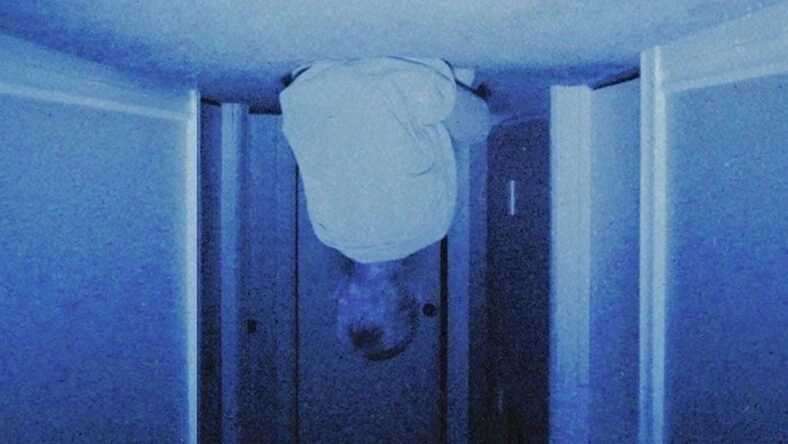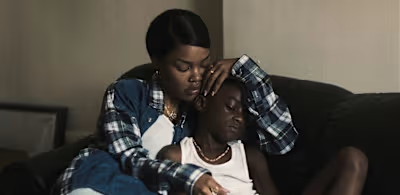Skinamarink Director Shares the Tragic Loss Behind the Horror P…

Kyle Edward Ball’s debut feature film Skinamarink is an indie horror sensation, but its journey to theaters this past Friday the 13th was beset by pain.
Shortly after filming wrapped on Skinamarink, Ball’s assistant director Josh Bookhalter passed away unexpectedly. The director was completely at a loss. He took some time away from the project to grieve. Then, when he was ready to work again, he discovered an unexpected issue: The movie’s audio was on Bookhalter’s computer.
“Number one, I’m mourning the loss of my friend. Number two, I didn’t just want to lose that audio,” Edward Ball told MovieMaker. Below he tells us how he made a way forward for their movie.
Skinamarink tells a story of a very young brother and sister who wake up one morning to find that their father is missing and the doors and windows in their house have vanished. The movie is more experimental than your average horror film, but it’s playing in mainstream theaters across the U.S., and has already earned $1.5 million at the box office, making back its budget 100 times over.
We talked with Kyle Edward Ball about the difference between scary and creepy movies, and if it matters if you watch his film in a theater, on TV, or on a computer, given that it will begin streaming on Shudder on February 2. He also talked about the pressure he feels to make a more traditional narrative movie.
Joshua Encinias: You’ve said, “Scary fades. Creepy is forever.” Will you elaborate on that?
Kyle Edward Ball: I have to give credit where credit’s due. That’s actually my take off on a
Judge Judy quote, “Beauty fades. Dumb is forever.” For my version, I always use the example of The Exorcist versus The Shining. When The Exorcist came out, it was scary, it made you jump out of your skin, and I still think of it as a masterpiece. But it’s not as scary because it’s been cannibalized. People immediately took from it and took the scare aspects of it and applied it to other movies. The Shining is different — it isn’t really scary. It doesn’t make you jump out of your skin, but it’s it’s creepy: it gets under your skin, and creepy you can’t get rid of.
There are short films and silent films movies from the 1920s that were maybe a little weird when they came out, but I’ve only gotten creepier with age. So creepy ages like wine.
From Youtube to Skinamarink
Joshua Encinias: Your director of photography Jamie McRae is a experimental filmmaker, and he doesn’t typically do cinematography for other people. Why did you want to work with him?
Kyle Edward Ball: In a nutshell, Jamie and me just click, so years before this, we worked
together on my first short out of film school, which was about sleep paralysis. We worked perfectly together and even during film school, a lot of the time we weren’t even assigned to the same group, but we would work together. I don’t know why but when we work together, we’re one mind about things. Our working relationship was incredibly good and a big thing with this production was I wanted to work with people who I get along with and vice versa. We had very limited time and I want to be of one mind about things. He’s also interested in the same weird subreddits as I am, like /liminalspaces and /weirdcore.
Joshua Encinias: Do you think the experience of watching Skinamarink changes depending if it’s viewed in a theater, TV, or computer? I ask because the project grew from your Youtube channel.
Kyle Edward Ball: It’s hard because I’ve seen so many people talk about the theatrical
response to Skinamarink and feeling of being in a theater with a ton of anxious people. I’ve also heard about film critics getting screeners who talk about watching it on their laptop and how scary that was. And I’ve seen the inverse, where people watched it on a laptop or watched it in a theater and couldn’t even finish it. I would say, like most good horror movies, they will feel great in a theater and also great at home. I didn’t have the luxury of seeing most of my favorite horror movies in the theater. I had to watch them on TV.
Joshua Encinias: Did you run into any unexpected problems while you were making the
movie?
Kyle Edward Ball: My assistant director Josh Bookhalter passed away. May he rest in peace. I miss you so much, Josh. He passed away shortly after we wrapped filming but the movie’s audio was still on his computer, so that was a difficult thing to handle. Because number one, I’m mourning the loss of my friend. Number two, I didn’t just want to lose that audio. I could have easily redone the audio, but I really wanted to keep that audio explicitly because Josh also recorded Skinamarink’s audio. After he died, I had to provide enough time in between him passing away, and his family having time to process it.
But in the same vein, not long enough that it’s like, “Well, are they just going to delete everything on his computer?” So I waited a bit. I was able to get a hold of his family and they were more than understanding and accommodating in the circumstances of everything. Which is why in the movie, on top of being In Memory of Joshua Bookhalter, there’s a credit saying we would like to express our sincerest thanks to the friends and family of Joshua Bookhalter. Without their kindness and understanding, Skinamarink would not have been completed.
Joshua Encinias: That’s really powerful. Did you have to step away from the project during your grief?
Kyle Edward Ball: I had a little bit at the beginning where I had to step away. I originally wanted to hit the ground running editing, but on top of the delay of having to get the audio, I just couldn’t quite get into it. Then at some point, maybe two weeks after, I said, “No, I have to do this. This will maybe help with things.” And again, I’m just his friend who he knew for a few years, right? I can’t even imagine what his friends and family had to go through. Editing the movie for five months was a little bit healing. There was also hard parts. There were times during the edit where I would see him on screen and I would burst into tears.
Joshua Encinias: I’m really sorry. Do you want to keep talking?
Kyle Edward Ball: Thank you. You can ask away.
Joshua Encinias: Okay, I have one more question. Because your first movie is a mainstream success, do you feel an expectation to make narrative driven work going forward?
Kyle Edward Ball: It’s interesting you brought that up, because that’s been a huge thing on my mind as of late. When I think of my idea for the follow up feature, I’m asking, “What if I did something a little bit less experimental? Would people still like it? Or if I kept it as experimental as Skinamarink, would people say I’m just doing the same thing over and over again?” I’ve been overthinking things. The luxury of making Skinamarink was there were zero expectations. I was able to form it by myself in my own head and now I have all this weird pressure. I have a feeling a lot of this, too, is just kind of being the soup of it, having it released and the jitters of that. I feel that once it’s on Shudder and the attention has died down for a little bit, I can finally hunker down, close the drapes, pace around, and start formulating movie number two.
Skinamarink is now in theaters and arrives on Shudder on February 2.
Share:
Like this project
Posted Sep 22, 2023
Skinamarink director Kyle Edward Ball discusses the tragic loss of his friend and collaborator Josh Bookhalter during the making of the film.
Likes
0
Views
1.5K





